Google Nexus 7 and Android 4.1 - Mini Review
by Brian Klug on June 28, 2012 3:25 AM EST- Posted in
- Tablets
- Smartphones
- Mobile
- Nexus 7
- Android 4.1
Android 4.1 is the newest release of Android, and in keeping with the dessert-alphabet naming scheme, goes by the name of Jelly Bean. Henceforth you'll see JB or 4.1 interchangeably. Google sampled me another Galaxy Nexus, running the same build of Android 4.1 that was handed out to Google I/O attendees today. This isn't the final version that will be pushed out in July, but is close to final – or at least final enough to give to a few thousand attendees and press.
I mentioned in the pipeline post about Android 4.1 that I heard UI performance was going to be a big emphasis in 4.1, that Google wanted to make the UI "smooth as butter" everywhere possible. Today seeing the announcement of Project Butter comes as no surprise, and represents further optimization to the hardware accelerated OpenGL ES render path that was introduced in Android 3.0 Honeycomb, and further improved in Android 4.0.x with more graphics primitives, making moving to it easier for developers.
In Android 4.1, the improvements that are under Project Butter are really four things:
- Improved 60 Hz Vsync timing from the Android drawing framework for individual applications. That means render path, touch, and display composition now take place on a 16 ms step.
- Triple buffering for the UI, which I believe previously could be enabled, but only in individual OpenGL ES instances. The Android 4.0.x UI did not have triple buffering enabled as it now is.
- Changes to the CPU governor which now send the SoC into its highest performance state as a function of touch interaction. I'm still eager to learn more about this in an upcoming session, but Android now better handles the latency associated with changing P-states on SoCs and getting into that maximum state when you're aggressively scrolling and panning.
- Enhancements to analysis in the form of Systrace for seeing the actual time spent in each part of the render process for a frame. This is being pushed out in the new Android SDK and there are obvious hooks into it under Developer Options inside 4.1. Google also gave us a glimpse of that earlier today.
The result of these improvements is that the Galaxy Nexus feels like a different device to me with Android 4.1. It isn't huge, but the trouble spots that used to annoy the heck out of me with Galaxy Nexus and 4.0.4 are now largely smoothed over. That's not to say it's perfect, but it's clear Google has invested time (finally) into mitigating some of Android's lingering UI choppiness.
I wanted to show this on video, however my DSLR only captures at 24 FPS which would make it pretty difficult to see dropped frames. I brought my other Galaxy Nexus with 4.0.4 and put it alongside the 4.1 device, and there's a substantial difference in trouble areas.
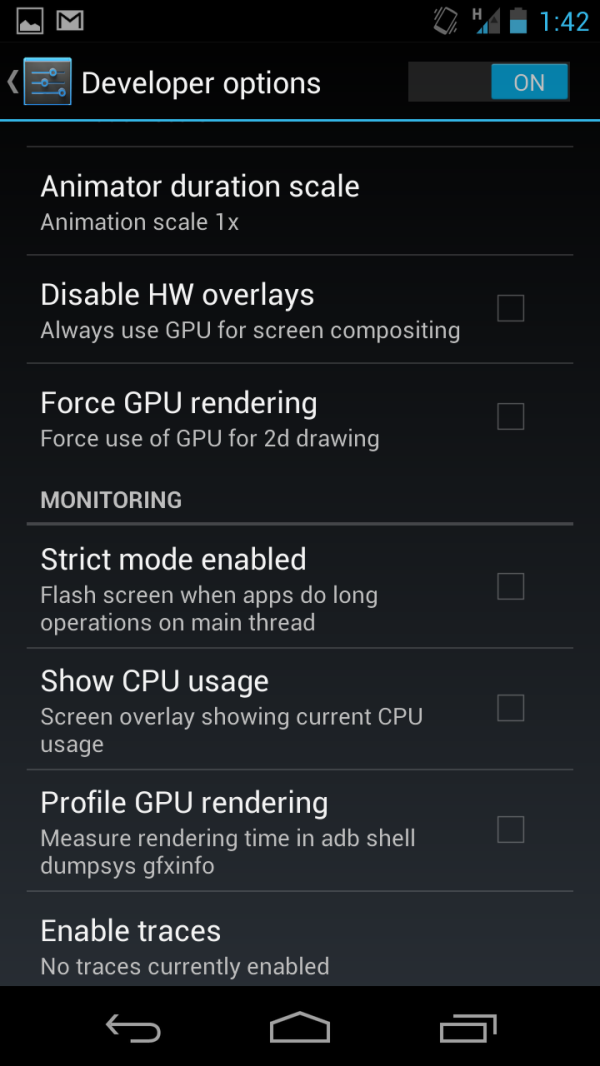
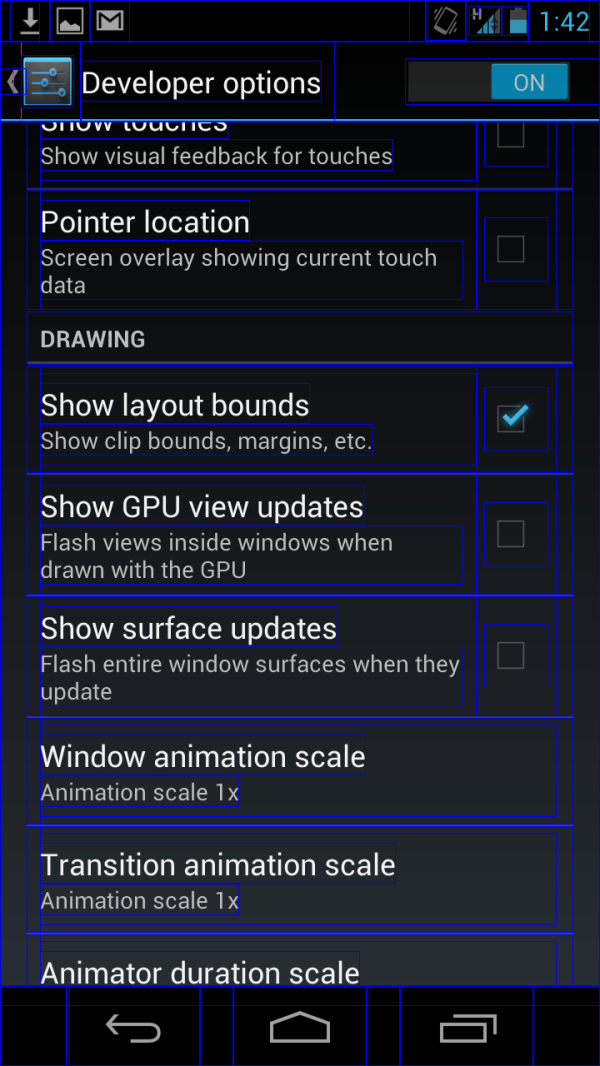
Additional GPU related drawing debugging under Developer Options
Some of those trouble spots included: scrolling the applications launcher into the widgets tab, the task switcher, screenshot compress and fade animation, application launch / close, and scrolling list boxes. In the case of the task switcher (which was not smooth in 4.0.4), the animation is now finally one that doesn't drop frames left and right. It is a huge difference. The others just feel better. I've also noticed that a number of other primary UI transitions have been somewhat simplified from a squeeze and fade to just a translation up or down across the screen. I think some might make the case that this is just optimization by removing transition flashiness, but on the whole the result is a much snappier interface.
I still feel like the SGX 540 running at non-max clocks inside the Galaxy Nexus' OMAP4460 is overburdened, but with the right SoC Android 4.1 is going to scream. On the Nexus 7, the interface is very close to being fluid everywhere. I'm very impressed with performance on that device.
While we're talking about settings related improvements, the settings page gets some reorganization, including putting accounts right on the settings page, and under WiFi are new toggles for WiFi direct, and WPS pairing. Google has also changed up the toggles in 4.1, from the slanted, almost razor-blade like sliders to just plain switches. Another subtle thing is a change under About Phone -> Status: the network type indicator now shows "HSPA+" instead of "HSPAP" which previously confused users.
There are some other new UI related 4.1 features. First up, notifications shade gets a dramatic improvement, including support for action to be taken right from the notification menu, such as dismissing a calendar alert, declining a call, or sharing photos. The top entry in the list also gets shown off in a larger box, and includes more detail. The bar also includes a rotation lock for tablets, and moves higher up on the display, obscuring the status bar indicators. The lock screen also gets an updated look, and a shortcut to Google Now.
Widgets are also automatically resizeable and reposition themselves in 4.1, which is a subtle but important improvement over the rigidity of the AOSP home screen in 4.0. I feel like a lot of these subtle improvements are inherited from various skins and 3rd party customizations, which makes sense. Third party widgets will need an update to support official resizing.
The keyboard also gets some improvements, including support for additional languages, and an expanded dictionary. One subtle change is that when you have the keyboard up, the back symbol changes to a down caret, which will no doubt make that UI step easier to grasp for new users.
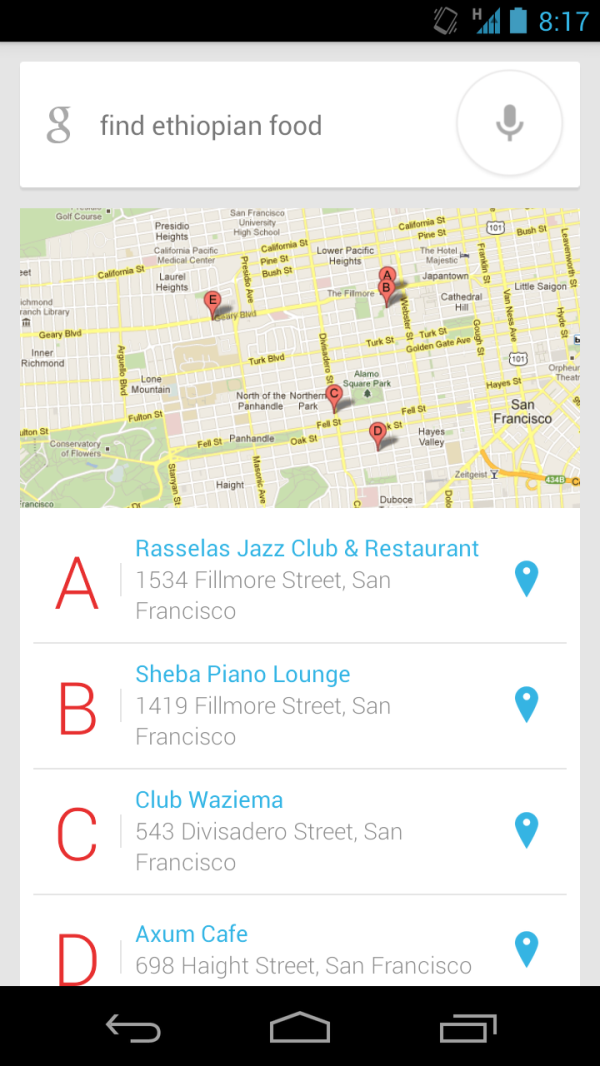

Left: Another Google voice search query, Right: New intents picker
Google's answer to Siri is a two pronged approach - improved voice search with offline voice recognition, and semantic data results to those queries. In practice, the use paradigm is almost exactly like Siri, though the approach Google demonstrated is a bit less conversational. I have only had time to ask a few queries (such as the above search for a camera store for a new battery charger), but voice recognition does indeed work with no cellular connectivity, though you do lose the confidence level underline under words. Part of the better Google search idea is Google Now, which Google believes so strongly in, it dedicated an entire shortcut to it.
Camera UI gets an overhaul and now reminds me of the Windows Phone 7 approach. You can swipe left to view the previous captured images, while the live preview remains live and slides off the screen. Photos can be deleted by then dragging up, like dismissing a card in webOS. This is also nice and smooth throughout. Android 4.1 also adds a new capture animation, but oddly enough I couldn't grab a screenshot of it.
| Android 4.0.4 vs 4.1 on Galaxy Nexus | ||||||||
| Location | WebKit Version | HTML5test.com Score | CSS3test.com Score | Sunspider 0.9.1 | Browsermark | |||
| Android 4.0.4 | 534.30 | 280 + 3 bonus | 49% | 1830.9 | 99493 | |||
| Android 4.1 | 534.30 | 281 + 3 bonus | 49% | 1411.8 | 125103 | |||
While the Nexus 7 formally replaces Browser with Chrome (sans beta as of today), Android 4.1 proper on the Galaxy Nexus and other devices will retain Browser for some time. That web browsing experience gets improved in 4.1 with better support for HTML5 video, better rendering performance and memory usage, and further improvements to the V8 JavaScript engine. In browsermark and sunspider the difference in V8 is pretty dramatic, elsewhere there isn't a big change at all, as it's the same core version of webkit, just optimized more.
There are more changes as well, including binary diff / delta update support for updating marketplace applications. Google has done the usual thing and outlined all of those other changes on their developers page for Jelly Bean. It's impossible to pass judgment on Android 4.1 after just 12 hours with both an updated Galaxy Nexus (with my primary SIM inside) and the Nexus 7, but thus far the improvements to UI smoothness have made a noticeable difference. Beyond that, probably the second most appreciable difference is in notifications, which now conveys much more information for things like new mail beyond the subject line and sender. The other thing to note is that again, this Android 4.1 isn't 100% final, but it is extremely close. I haven't seen any glitchiness yet, but obviously there will be changes before the final mid-July OTA update for Galaxy Nexus devices and others that were announced in the keynote. I'm looking forward to digging up the other subtle things that are new in Android 4.1 and updating if necessary.


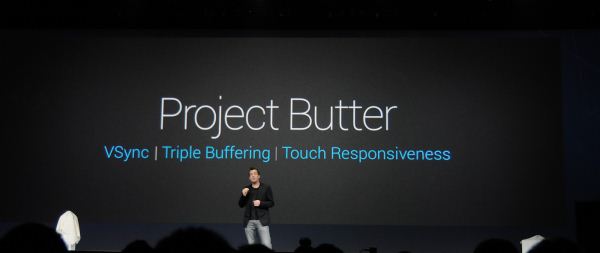
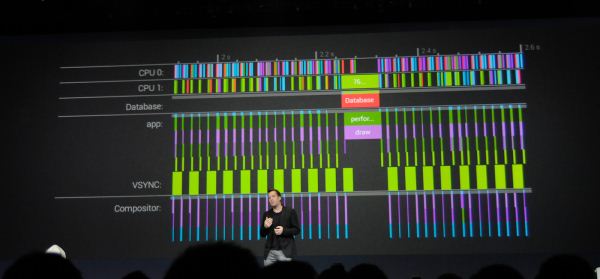
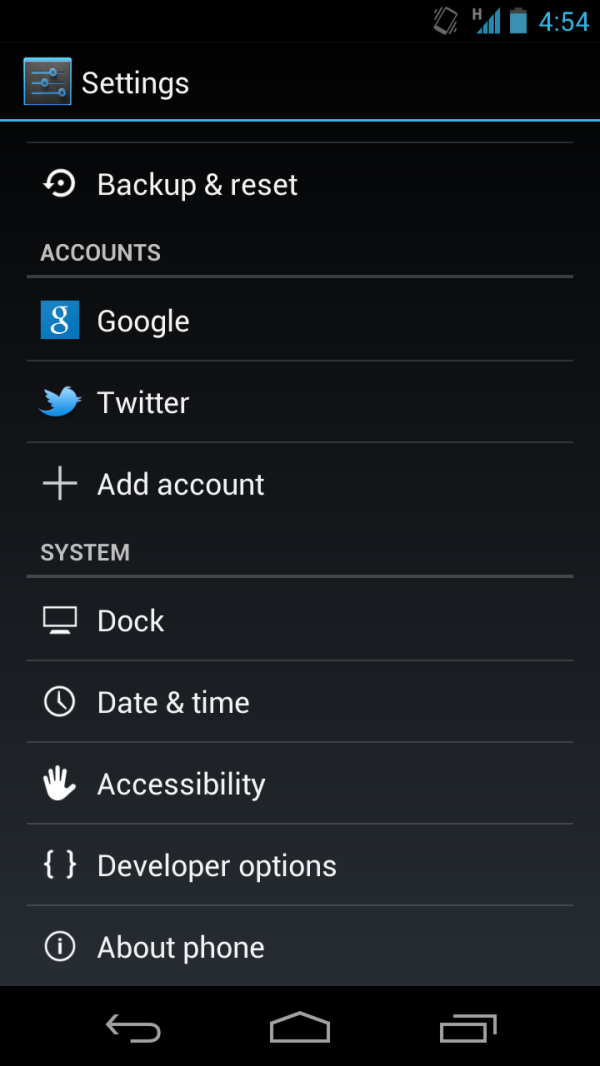

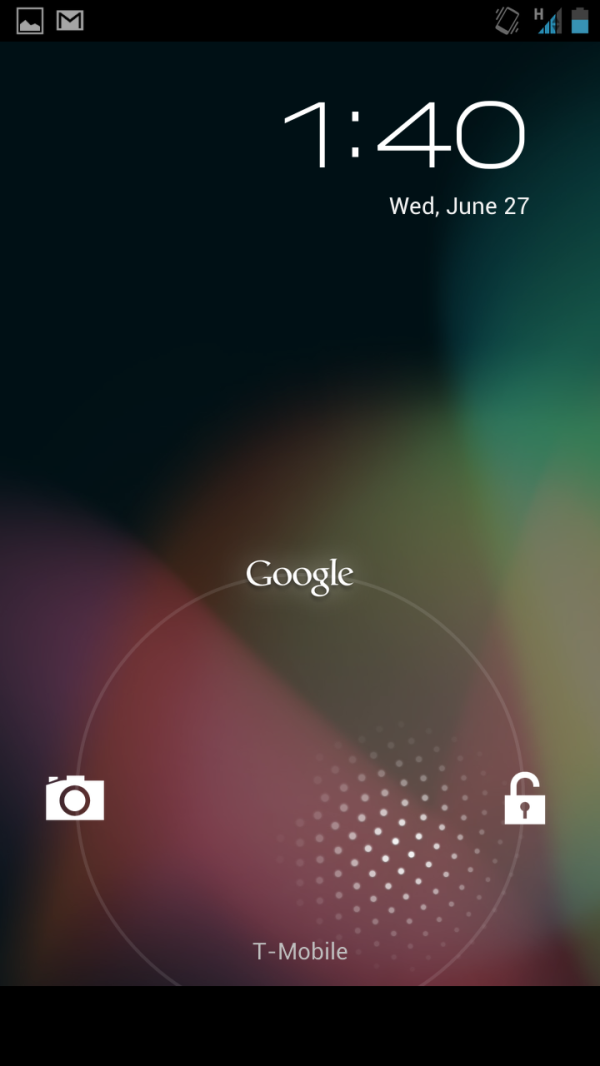
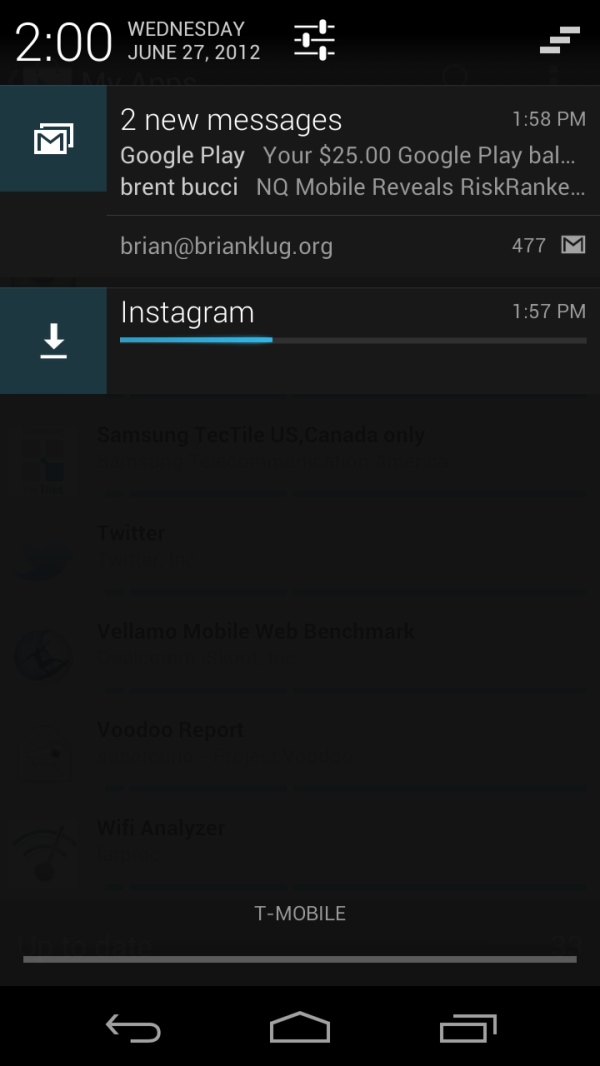
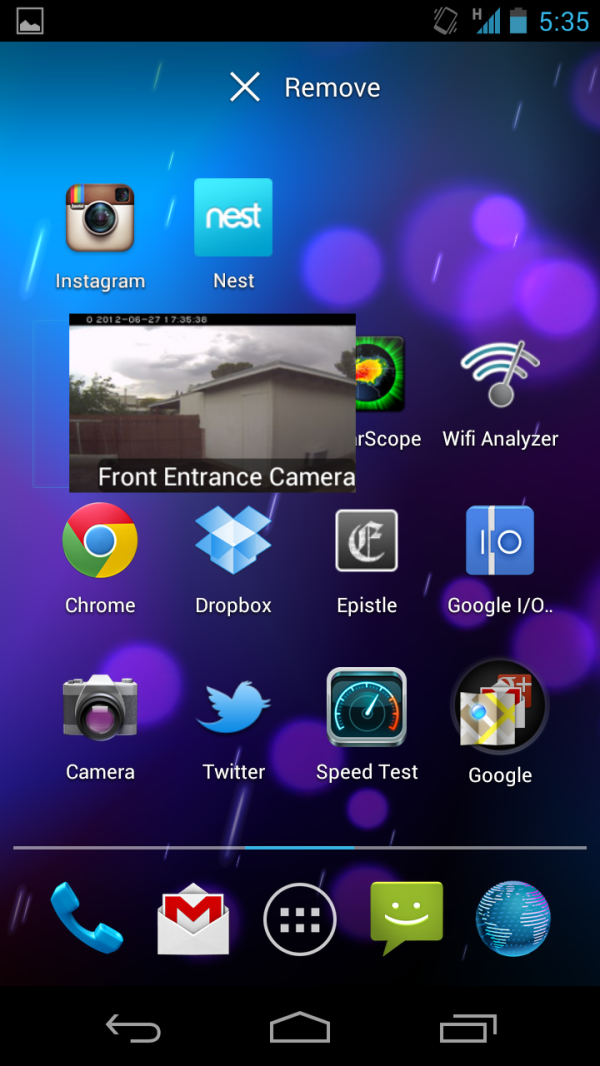
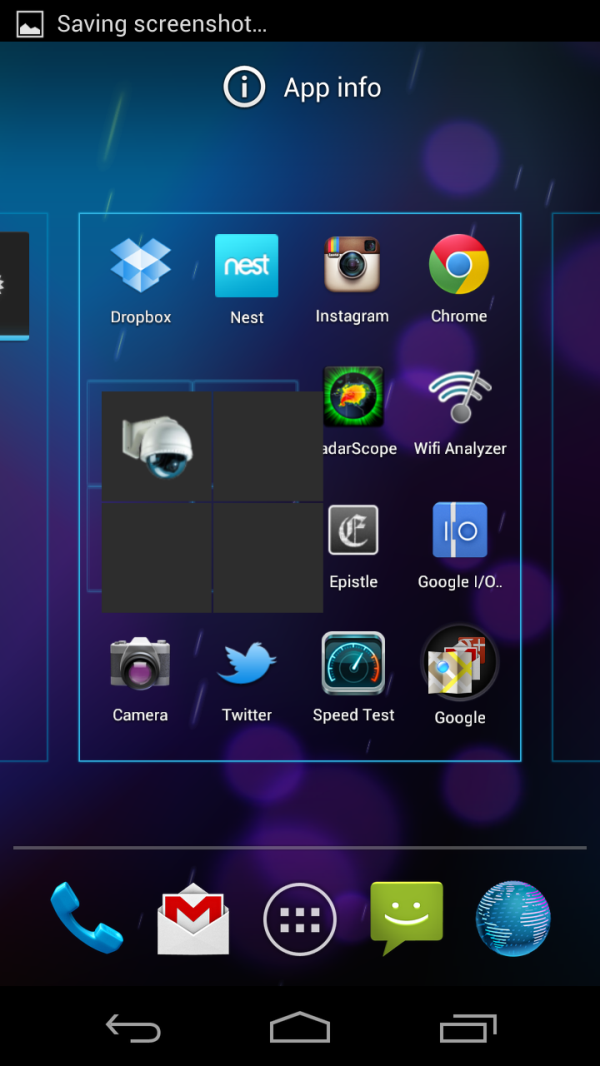

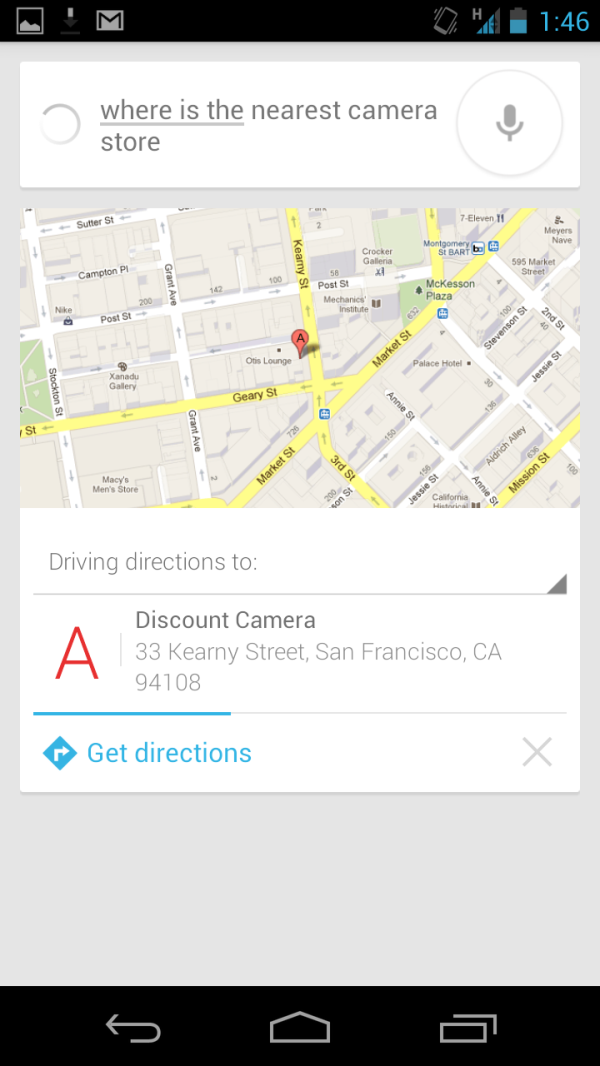














188 Comments
View All Comments
gatorproof - Thursday, July 5, 2012 - link
40% of Americans don't have access to Broadband by cable. I, for one, pay 10GB for LTE because our land and home can never get cable. So at 10GB a month by not using clouds and watching You Tubes, sadly is a way of live. With taxes our monthly bill to run 2 desktops, 2 laptops and 3 tablets is over $100 a month. We are retired and travel out of the country nearly 6 months a year. SD is the only practical way to met our needs on 3 week vacations and in daily life.lexluthermiester - Sunday, July 1, 2012 - link
equals no purchase. Companies making these things need a clue about why people pick one device from another. Users need ability to replace things that frequently go bad[like batteries] and the ability to expand storage. Without these key device aspects, things like this are little more than a toy... Sad really.darkcrayon - Tuesday, July 3, 2012 - link
It would seem that, considering the sales of the most popular tablet (which incidentally costs 2X as much), these things aren't nearly as important as you're stating.lexluthermiester - Saturday, July 7, 2012 - link
And most buyers are near mindless sheep. Power users enjoy expansion options and customizations...trip1ex - Monday, July 2, 2012 - link
Just what I wanted. Half an Ipad for half price. Not.BrownPaw - Monday, July 2, 2012 - link
This would be the PERFECT 7" tablet if it only had MicroSD. God dammit, Google!uninspired - Monday, July 2, 2012 - link
How is the Galaxy Tab 2 7" not one of the comparison models for benchmarks? At the same size and at a close price-point, it seems a much better candidate than the original Galaxy Tab or the Xoom if you want to make comparisons. And HP Touchpad? Really? FFS....gatorproof - Wednesday, July 4, 2012 - link
OK T30 Tegra 3 clocked 1.1 with 4 cores and 1.3 with the 5th coaster core for sipping juice and doing light duty CPU work which is more than you might think is in the Nexus 7. vs. Galaxy Tab 2 7 running a 4430 dual core out of the left over parts bin from Kindle Fire. 2) DDR3 RAM the exact used in the new Mac Pros only it's1GB,vs, DDR2 but at least it is 1GB. Display IPS 216 ppi pixel density screen with 178 degree viewing range and rich powerful color spectrum, vs a washed out 169ppi with grays instead of blacks and no color pop at all. I owned one, I returned for two reasons, unacceptable display and 80 seconds to load 6 pages of PDF files. Did you not read this article and do you understand the benchmarks? The Tab 2 did not make the cut and even get on the benchmark charts, let alone rank high on the benchmarks like the Nexus 7. The old Galaxy Tab 10.1 is a real tablet. The Tab 2 7 a little thing Samsung throw together in pretty case to hit a price point, but where's the beef? There is none. It is just a cute little starter unit with Kindle parts with an extra 512MB of old DDR2 ram which is cheap now. The Tab 2 can't hold a candle to the old Galaxy Tab 10.1 for display or power. The Nexus 7 stomps all 7" tabs even ones costing 3 times as it does. Samsung usually defies the math with their displays, however they didn't bother with the Tab 2 7. That's why it is NOT on the Benchmarks, it isn't good enough. Sorry to be so blunt. Now if you bought one, and it is your first tablet, just use it and have fun with it. Next time when you upgrade step up for a power/strong display unit. It's all good, right.MobiusStrip - Wednesday, July 4, 2012 - link
"I found out that mounting USB storage will not be supported natively."Why is this not a function of Android itself? If it has a file system and USB drivers, then it shouldn't even be an option; it should be available and taken for granted.
By pulling shit like this, Google is killing Android's advantage over iOS: connectivity and proper I/O. They named their whole conference "I/O", at which they launched this hypocrisy?
Apple's devices are relegated to toys and gimmicks because Apple prevents developers from doing the most basic data sharing and communication with external devices. Want to control a camera or other USB device through the dock port? NOPE. Want to share data between your iOS app and a counterpart app on the computer? NOPE. Those expected functions, which should have been ironed out with the first release of the SDK, are still not available years later. Because Apple is ruled by fear.
That's where Android can provide far more real-world applications, for both productivity and fun. And a small tablet like this would be a great place to start developing. So now Google decides to cripple it? Yet another failure. It's like they can't learn.
MobiusStrip - Wednesday, July 4, 2012 - link
Don't even start with the "cloud" scam. In an era when local storage is dirt cheap and spacious, it's exactly the wrong time to offload all of your media to some third-party server and then PAY to get it back, and PAY for data overages, and not even be able to access it in other countries, the subway, a plane, a road trip through the mountains...